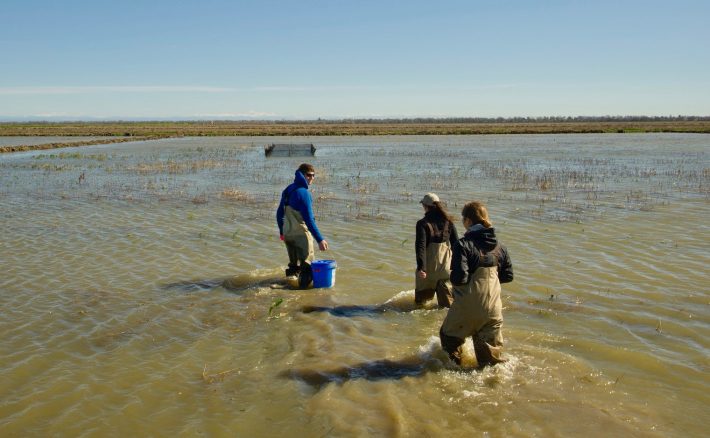University of California, Davis press release.
Eye-popping research published in Methods in Ecology and Evolution helps inform salmon and floodplain management.

Scientists from the University of California, Davis, demonstrate that they can use stable isotopic analysis of the eye lenses of freshwater fish — including threatened and endangered salmon — to reveal a fish's life history and what it ate along the way.
They conducted their study, published today in the journal Methods in Ecology and Evolution, through field-based experiments in California's Central Valley. The study carries implications for managing floodplains, fish and natural resources; prioritizing habitat restoration efforts; and understanding how landscape disturbances impact fish.
The technique had previously been used in marine environments, but this is its first use for freshwater fish, many of which are threatened or endangered in California. Lead author Miranda Bell Tilcock, an assistant specialist with the UC Davis Center for Watershed Sciences, helped pioneer the technique for freshwater fish.
"Even the nerdiest fish biologists say, 'You can do what with fish eyes?'" said co-author and team co-lead Rachel Johnson, a research fisheries biologist with NOAA Fisheries' Southwest Fisheries Science Center and associate with the UC Davis Center for Watershed Sciences. "This is an exciting new tool we can use to measure the value of different habitats and focus conservation work."
The eyes have it
Much like tree rings, fish eyeballs are archival. The lenses grow in layers throughout a fish's life, recording as chemical signatures the habitats used while each layer was forming and locking in the dietary value of what the fish ate in each habitat.
It's like a little diet journal the fish keeps for us, which is really nice
– Tilcock said.
To uncover that history, researchers perform what Tilcock said is "like peeling the world's tiniest onion." With fine-tipped forceps, they remove layer after layer, revealing a veritable Russian nesting doll of eye lenses. At the end is a tiny ball, like what you'd find in a silica packet, that can shatter like glass. This is the core, where the fish's eyes first began to develop.






